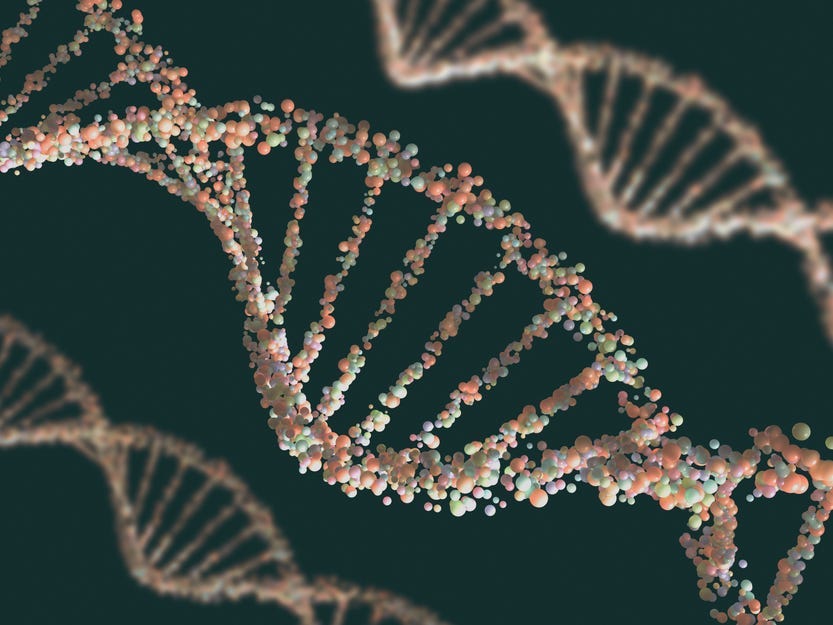
Synthetic muscles could potentially cope with a high power output, even on a small scale.
Gorodenkoff / Getty Images
- Artificial muscles can be made by twisting synthetic strands in a similar way to a DNA helix.
- A team "supercoiled" threads coated in a hydrogel into helices, according to The Conversation.
- These small, synthetic muscle fibers could, one day, power miniature devices in prosthetic limbs.
- See more stories on Insider's business page.
The DNA double helix is one of the most easily discernible shapes in biology but many are unaware of the impressive process that allows the helix to retain its shape - in a process called supercoiling, DNA crams roughly two meters worth of strands into a single human cell.
When the two strands twist together, if they keep twisting until they're completely wound around each other, the extra force causes the strands to collapse out to the sides. But this phenomenon isn't exclusive to the DNA helix.
A decade ago, researchers found that artificial muscle fibers could be synthesized by twisting man-made strands in a similar fashion, according to The Conversation.
Even if small strands are used, the resulting fiber structures can withstand a considerable amount of force, provided the strands are rigid enough.
The force they're capable of exerting even on a small scale means these artificial fibrous structures have a wide variety of applications.
Supercoiling can create extra-strong synthetic muscles
More recently, scientists at the University of Wollongong in Australia conducted a study, published in Science Robotics, to produce super-strong synthetic muscles.
Using polyester threads, the team created artificial muscle fibers and coated them in a hydrogel that expands when in contact with water.
These were then twisted into a helix structure and soaked in water, causing them to swell up.

In a process called supercoiling, DNA crams roughly two meters worth of strands into a single human cell.
Shutterstock
Under normal circumstances, the swelling would simply undo the fibers - but the researchers found that by clamping the ends the fibers, they instead underwent supercoiling.
In doing this, the helix ended up contracting by 90% of its original length. For contrast, mammalian muscle fibers can only contract by 20%.
Essentially, a supercoiling fiber of a diameter 30 times smaller than our own muscle fibers can carry out the same lifting effort.
There's a considerable variety of applications in which powerful, scaled-down muscle fibers could help power miniature devices where space is in short supply.
For instance, existing prosthetic hands driven by motors are reasonably advanced but they still can't mimic the strength, dexterity, motion, and grips of a healthy human hand.
This is, in part, down to the fact that electric motors become much less powerful as they're scaled down to fit within prosthetics - but synthetic muscles could potentially cope with a high power output, even on a small scale.
While there is still more research to be done to produce artificial muscle that's capable of matching many of the characteristics of our own natural muscles, these small, supercoiled fibers may bring us closer to generating powerful contractions in a new generation of prosthetic limbs, or even automated surgical systems.
Read the original article on Business Insider

-------------------------------------
By: [email protected] (Jacinto Araque,Qayyah Moynihan)
Title: How a 'twisting' method could help us build artificial muscles for robotic prostheses
Sourced From: feedproxy.google.com/~r/clusterstock/~3/9QFvp5H29yM/future-textile-anatomy-amputee-amputation-limb-synthesis-synthesize-biology-2021-5
Published Date: Fri, 10 Sep 2021 15:12:49 +0000
Read More
 Make Money OnlineForexInvestingBitcoinVideosFinancePrivacy PolicyTerms And Conditions
Make Money OnlineForexInvestingBitcoinVideosFinancePrivacy PolicyTerms And Conditions
